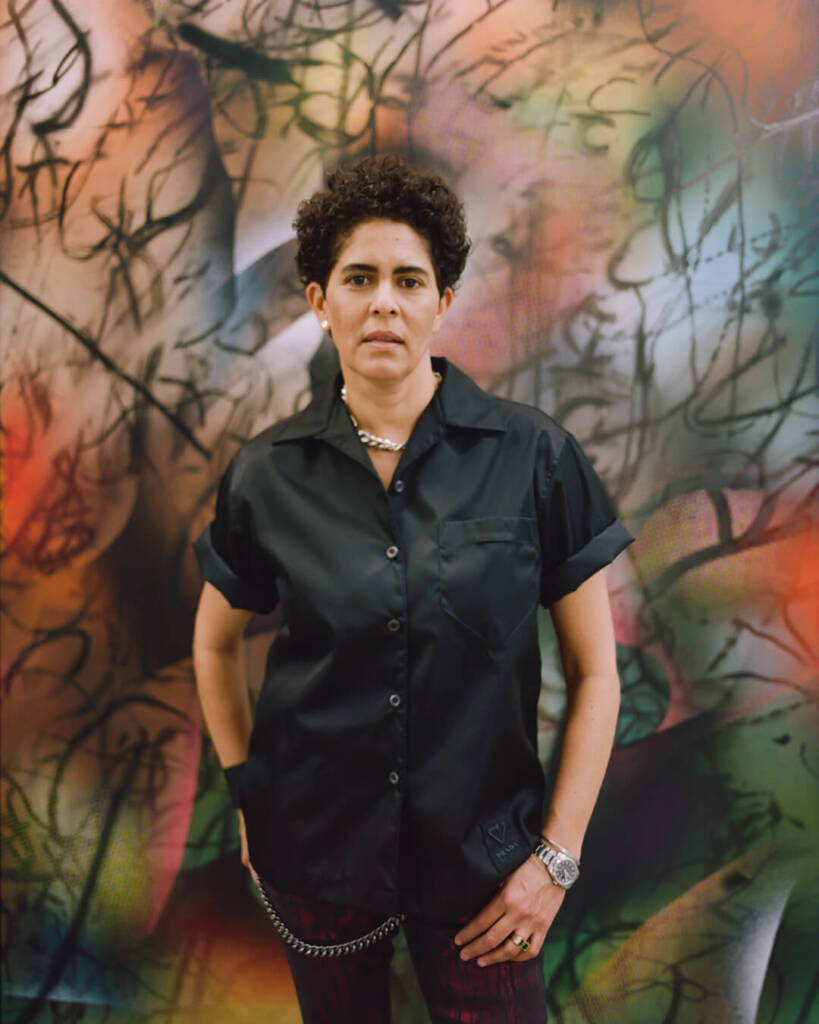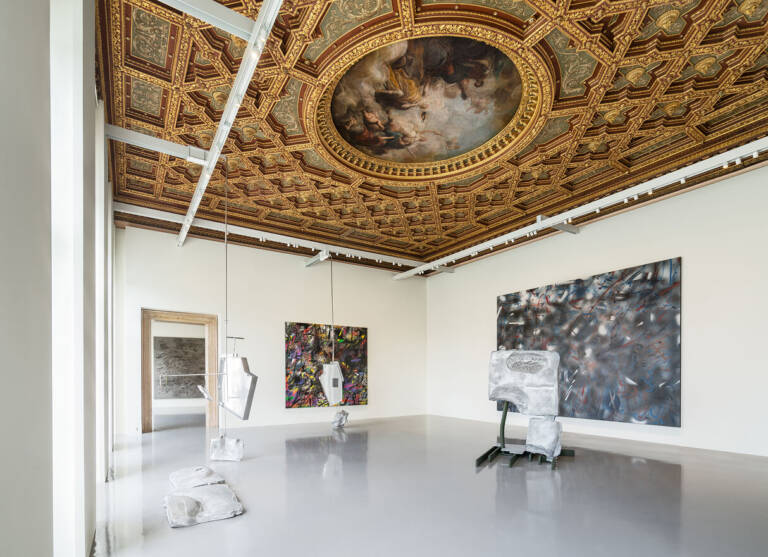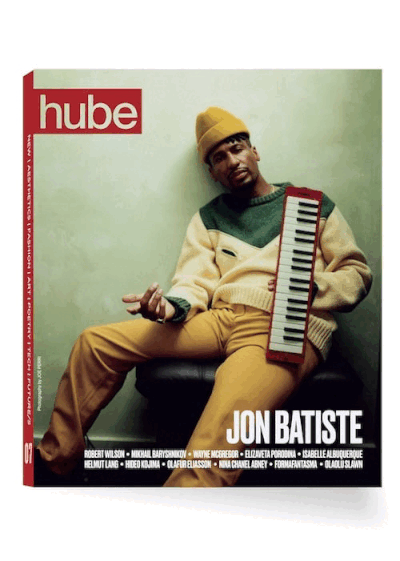
Courtesy of JULIE MEHRETU and MARIAN GOODMAN GALLERY
Julie Mehretu, a powerhouse in the contemporary art world, is known for creating captivating, abstract works that are at once monumental in size and intimate in detail. In a practice that spans painting, printmaking, and drawing, Mehretu employs a meticulous creative process that evolves through the layering of impressions: gestural marks, architectural plans, timelines, and truths of global politics build to create vast and energetic visual landscapes.
Born in Addis Ababa, Ethiopia, and educated in the United States, where she lives and works today, Mehretu’s perspective has been shaped by her lived experience and a persistent engagement and interest in the world around her. Mehretu draws inspiration from the chaotic beauty of urban environments and the complexities of modern life, transforming these influences into dynamic compositions. Her work moves beyond visual expression to offer a journey that is social, political, historical, and personal.
Mehretu’s work has redefined abstraction in the 21st century, making her one of the most influential artists of our time. If you’re in Venice, make sure to visit Ensemble, the largest exhibition of Mehretu’s work in Europe to date, on view at Palazzo Grassi until January 6th, 2025.
hube: Art seems to reveal who we are; do you think it might be the only way for a person to truly understand themselves?
Julie Mehretu: I believe art has the incredible ability to reflect, question, and serve as a testament to the evolution of culture-both the moment we live in and the way culture changes over time. It acts as both a mirror and witness to our experiences. It offers a different kind of transformative experience, and, in that sense, it’s like something sacred.
h: In your work, the presence of time is obvious. Research, archiving, observation, or dialogue: which approach resonates with you most?
JM: I think of time as something that is not strictly linear. It’s not a simple past, present, and future, but rather a mix of all three. It’s more complicated in that way, like a zoetrope or something in which cycles repeat, memory and how memory works, inherited memory, joy, and trauma. All of these things shape our understanding of ourselves and the world. But time is also the experience of being in the present while looking to the past or projecting into the future, somehow these aspects are all folded into one another. Time is complex, and maybe that’s why exploring different directions and ideas to visually collapse these boundaries is so interesting.

